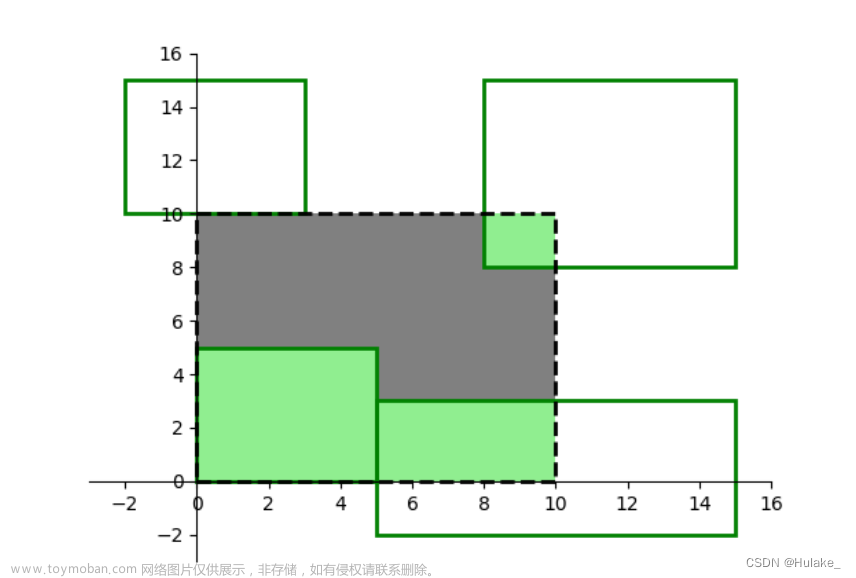- 数据结构:结构体数组、哈希表
-
struct User { int DN; // 存储用户标号 unordered_map<LL, LL> attr // 哈希表存储属性和值; }user[N]; - 原子表达式:处理很简单,利用
string中的find()函数找到:或~的位置下标,左边为key,右边为value,遍历结构体数组寻找匹配的用户。 - 表达式的逻辑组合:
&(...)(...)括号内也可以是逻辑组合,如&(|(1:2)(3~4))(101:202)。注意不会出现&(...)(...)(...)这种情况。处理思路是对于&(...)(...)提取左右括号内的字串,并递归求解。 - 更多实现的细节请见代码中注释。
官网运行截图如下,本来是奔着解决前40分的,没想到拿到了100分,但由于非常暴力,运行时间10s了。 文章来源地址https://www.toymoban.com/news/detail-459429.html
文章来源地址https://www.toymoban.com/news/detail-459429.html
#include <iostream>
#include <cstring>
#include <algorithm>
#include <vector>
#include <unordered_map>
#include <string>
using namespace std;
typedef long long LL;
const int N = 2510, M = 510;
int n, m;
struct User
{
int DN;
unordered_map<LL, LL> attr;
}user[N];
// 原子操作
vector<int> match(string str)
{
vector<int> res;
if (str.find(":") != -1)
{
int loc = str.find(":");
auto key = str.substr(0, loc);
auto value = str.substr(loc + 1, str.size() - loc - 1);
// str to int
int k = stoi(key);
int v = stoi(value);
for (int i = 0; i < n; i ++ )
{
if (user[i].attr.count(k))
if (user[i].attr[k] == v)
res.push_back(user[i].DN);
}
sort(res.begin(), res.end());
}
else if (str.find('~') != -1)
{
int loc = str.find('~');
auto key = str.substr(0, loc);
auto value = str.substr(loc + 1, str.size() - loc - 1);
// str to int
int k = stoi(key);
int v = stoi(value);
for (int i = 0; i < n; i ++ )
{
if (user[i].attr.count(k))
if (user[i].attr[k] != v)
res.push_back(user[i].DN);
}
sort(res.begin(), res.end());
}
return res;
}
vector<int> match2(string str) // &(|(1:2)(3~4))(101:202)
{
vector<int> res;
// 匹配 1:2
if (str[0] > '0' && str[0] <= '9')
return match(str);
// 匹配 &(...)(...)
else
{
char c = str[0];
str.erase(0, 1);
// 当左右括号数量相同时,得到子表达式
int len = str.size();
string s;
int loc;
for (int i = 1; i <= len; i ++ )
{
s = str.substr(0, i);
if (count(s.begin(), s.end(), '(') == count(s.begin(), s.end(), ')'))
{
loc = i;
break;
}
}
string sub_l = str.substr(1, loc - 2); // 左边括号中字串
string sub_r = str.substr(loc + 1, str.size() - loc - 2); // 右边括号中字串
vector<int> res_l = match2(sub_l); // 递归调用
vector<int> res_r = match2(sub_r);
if (c == '&')
{
vector <int> v_intersection;
// 取交集
set_intersection(res_l.begin(), res_l.end(),
res_r.begin(), res_r.end(),
back_inserter(v_intersection));
return v_intersection;
}
else if (c == '|')
{
vector <int> v_union;
// 取并集
set_union(res_l.begin(), res_l.end(),
res_r.begin(), res_r.end(),
back_inserter(v_union));
return v_union;
}
}
}
int main()
{
scanf("%d", &n);
for (int i = 0; i < n; i ++ )
{
int DN, cnt;
scanf("%d%d", &DN, &cnt);
user[i].DN = DN;
while (cnt -- )
{
LL a, v;
scanf("%lld%lld", &a, &v);
user[i].attr[a] = v;
}
}
scanf("%d", &m);
while (m -- )
{
string str;
cin >> str;
vector<int> res;
res = match2(str);
sort(res.begin(), res.end());
if (res.size() == 0) cout << endl;
else
{
for (auto i: res) cout << i << " ";
cout << endl;
}
}
return 0;
}
/*
2
1 2 1 2 2 3
2 2 2 3 3 1
5
1:2
3~1
&(1:2)(2:3)
|(1:2)(3:1)
&(|(1:2)(3~4))(101:202)
*/
文章来源:https://www.toymoban.com/news/detail-459429.html
到了这里,关于CCF-CSP 29次 第三题【202303-3 LDAP】的文章就介绍完了。如果您还想了解更多内容,请在右上角搜索TOY模板网以前的文章或继续浏览下面的相关文章,希望大家以后多多支持TOY模板网!












